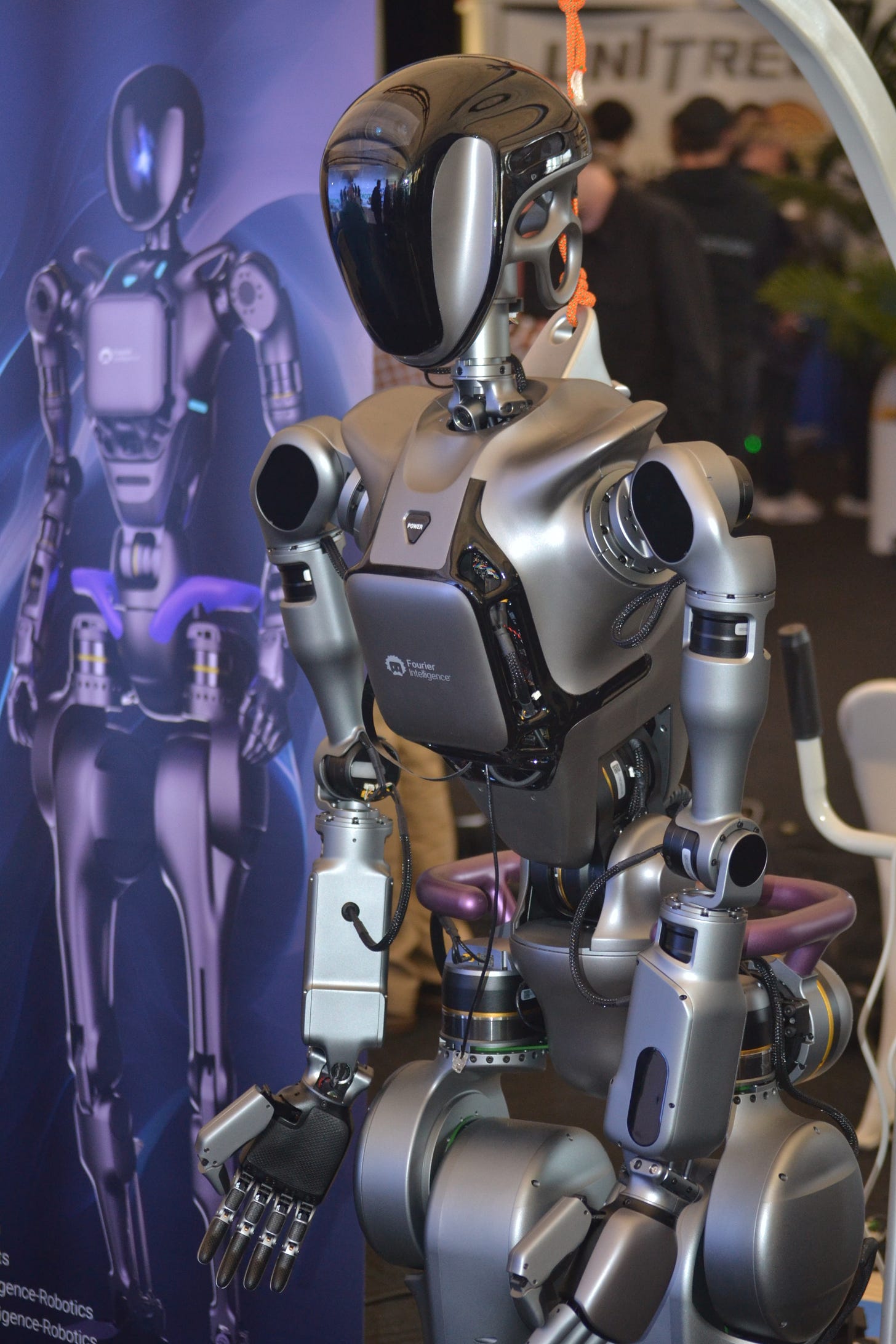Robotics from CES 2025
Humanoids came and partied. nVidia had major airtime and presence.
nVidia got a lot of airtime at CES 2025, with CEO Jensen Huang delivering the keynote (I loved this summary in 11 minutes). This post will mostly be discussing how nVidia announcements in CES 2025 (Yes! There were a ton of them) will be shaping robotics.
The chatGPT moment for robotics?
Jensen surrounded by 14 humanoids declared that: “The chatGPT moment for robotics is just around the corner”. Just like other gatherings, humanoids made a big splash in CES 2025. There is a great X thread which captures all the humanoids that made their presence in CES 2025. Our favorites have been the Engine01 SE01 (which has an impressive human like gait), Unitree H1 (see our video of the cheaper Unitree G1 here), and the Fourier GR2 robot. Below is a great picture of the Fourier GR-01 robot from our archives. If you like video feed on humanoids, there is great content on X (Just use this search link)
nVidia at CES 2025 Las Vegas USA
Now in the meat of our post, we will discuss how nVidia’s announcements at CES 2025 are going to shape (or re-shape) the course of robotics in the coming years. nVidia made three relevant announcements in their keynote.
DIGITS: nVidia unveiled Project DIGITS, which is the smallest AI supercomputer in a desktop form factor, with the Grace Blackwell GB10 Superchip which can deliver 1 Petaflops FP4 computational power and 128 GB memory, sufficient to store a 200 Billion parameter model in FP4. This will be available starting May 2025 time frame at a price of $3000. While DIGITS may bot be directly related to robotics, its importance lies in the fact that it provides a platform for robotics researchers to finetune models on local infrastructure plugged to standard electric outlets, without additional additional cooling requirements. So in a way, nVidia is locking in the AI + robotics research space by providing gear (and all the required software) at a fixed, low, and transparent cost. Students, research labs, hobbyists can just buy and deploy this gear, and not worry about continuously spending money on the cloud (which had become the de-facto place for training and fine tuning models). In a way, nVidia is bringing the mojo of the video gaming community to the robotics community. Out of all of nVidia’s announcements, DIGITS seems to be the most relevant to the common nerd who hacks into robots (the most of our audience). I can’t wait for DIGITS to hit the market. For another take on DIGITS, I invite you to read my friend and colleague Shwetank’s post which provides a comprehensive evaluation on DIGITS.
COSMOS: nVidia COSMOS is a framework to enable developers build datasets and pipelines for training advanced models. With COSMOS, nVidia has essentially open sourced what it calls World Foundation Models (WFMs). Datasets for robotics use cases are very hard to build because that involves capturing video feeds of teleoperated robots. COSMOS will provide developers an easy way to generate massive amounts of photo-real, physics-based simulated data, which can be then further leveraged to build advanced models for the specialized use cases. COSMOS is likely to be a game changer in the way data is generated for robotics use cases by solving the problem of data scarcity and variability.
GROOT: nVidia announced more developments to its GROOT platform in the form of nVidia GROOT BluePrint. GROOT BluePrint attempts to enhance data captured from imitation learning. In imitation learning, we aim to teach humanoids to learn skills by replicating human actions for the skill captured in data. As an example, with GROOT, one can use the Apple Vision Pro to capture human actions, which can be mimicked by a robot in simulation. GROOT then amplifies the dataset, making it more rich and diverse through enhanced simulations. There are many more workflows available on nVidia’s GROOT portal.
nVidia’s technology and stack is being used by several humanoid manufacturers, and it seems that nVidia faces no competition in this space which can develop into a market size of tens of billions of dollars. It surely is an exciting start to the new year. If you were at CES 2025, or have thoughts on nVidia’s announcements, we will love to hear from you in our comments.


